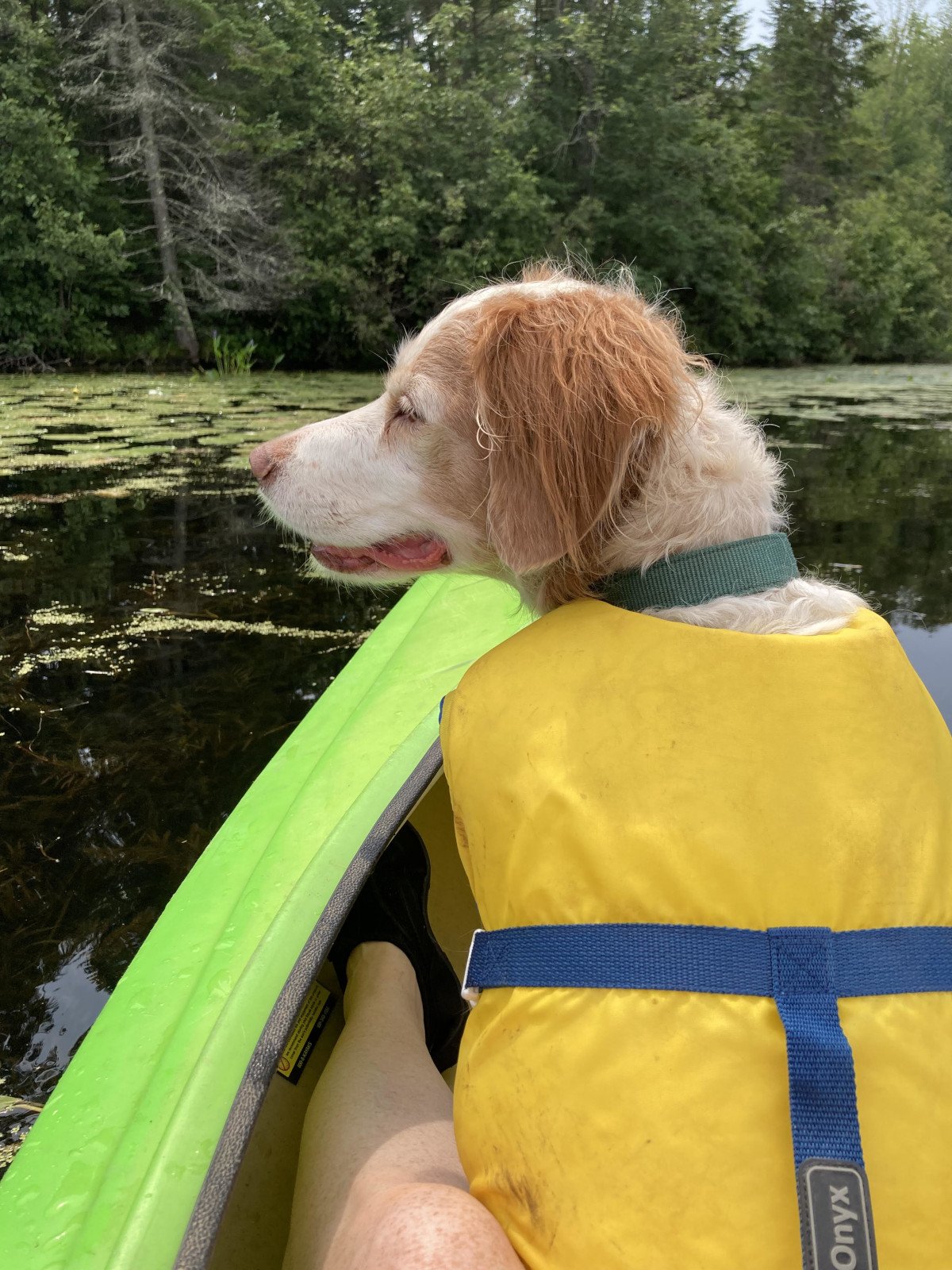Tough Feedback from my Highlights Faculty Reader
Joanie enjoying a ride with me in the kayak.
A week ago I received an editorial letter from my Highlights faculty reader, Crystal Allen. The letter was full of big picture feedback about my MG novel, No Dogs Die in This Book. (See my first post about Highlights’ Whole Novel Workshop.)
After reading through her letter twice and then going through her comments in the manuscript itself, I was convinced that she disliked this story.
That’s okay, I told myself. Every book is not for every reader. Maybe she’s not a dog person, I thought. Or doesn’t like animal protagonists.
I felt disappointed, but even if she didn’t like it, I could still see how helpful her feedback was.
For one thing, she answered each of my questions in detail. Here are some of them and snippets of her answers:
Does the beginning make you want to read on?
“Yes! At the beginning, I wanted to know what was going on with Chester.”What other things are not working yet? Or not working as well as they could? I’m thinking especially about emotion. Does that come through?
“The ending still needs work. There’s no climax for Chester. There’s no high stakes decisions made by him.”What about Chester’s voice? Is it believable? Is it age appropriate?
“Chester’s voice is fine, and it felt like a dog’s voice.”
Then she jumped into her overall critique, which she divided into sections: plot, characters, setting, what you need to work on, and marketability.
She had 5 items under “what you need to work on.” For example, “clarity of the rules in the Big Beyond and while on Earth as a guard dog.”
That idea relates to the worldbuilding. In fact, each item on the list of what I need to work on relates to worldbuilding. That surprised me.
I think I’ve lived with this story for so long that I’ve forgotten that readers need to be introduced to my canine afterlife just like they’d be introduced to a fantasy world like Hogwarts.
Over several days, I digested Crystal’s letter and her feedback on my manuscript. I made a list of questions for her that I asked when we met via Zoom, about a week before we’ll meet in person at Highlights.
I started with the “what you need to work on” section of her letter to confirm that my sense of all this stuff being related to worldbuilding was, in fact, what she meant. It was.
Then she spontaneously told me, “This story resonated with me.”
Wait. What? I probably looked surprised, because I’d persuaded myself that she didn’t like it.
On the contrary. She loves it. She sees “gaps that need filled in rather than problems.”
Our conversation was lively and full of exciting ideas about my characters, their pain, their healing, and how to help readers fall into this story and be totally absorbed by it.
After our call, during which I took many notes, I went back to the beginning of her letter. This was Crystal’s first paragraph:
Thank you for allowing me to read NO DOGS DIE IN THIS BOOK. I am excited about this story! Yes, it needs work, but I really think you have something here! I can’t wait to work with you on how we can make this story even stronger.
She may write the same thing to every Highlights student, but that doesn’t mean she’s not telling the truth.
It’s easy to ignore the positive feedback because I want to get to what needs fixed. But it’s also easy to ignore because it’s harder to believe.
